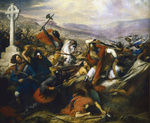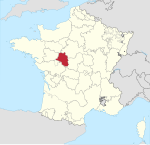Basilica of Saint Martin, Tours

The Basilica of St. Martin is a Roman Catholic basilica dedicated to Saint Martin of Tours, over whose tomb it was built. It is located in Tours, France.The first basilica was established here in the 5th century (consecrated in 471) on the site of an earlier chapel. It was at first served by a community of monks under an abbot, the Abbot of St Martin, who between 796 and 804 was Alcuin, the adviser of Charlemagne. Shortly before this the monastic establishment was changed to a collegiate church manned by a community of canons, but the office and title of abbot persisted.The mediaeval basilica was completely demolished during the French Revolution. The present church was built between 1886 and 1924 by French architect Victor Laloux in a neo-Byzantine style, on part of the site of the original basilica which was repurchased by the Church. It was dedicated on July 4, 1925.
Excerpt from the Wikipedia article Basilica of Saint Martin, Tours (License: CC BY-SA 3.0, Authors, Images).Basilica of Saint Martin, Tours
Rue des Halles, Tours Vieux Tours
Geographical coordinates (GPS) Address External links Nearby Places Show on map
Geographical coordinates (GPS)
| Latitude | Longitude |
|---|---|
| N 47.393055555556 ° | E 0.68277777777778 ° |
Address
Basilique Saint-Martin
Rue des Halles
37000 Tours, Vieux Tours
Centre-Val de Loire, France
Open on Google Maps










